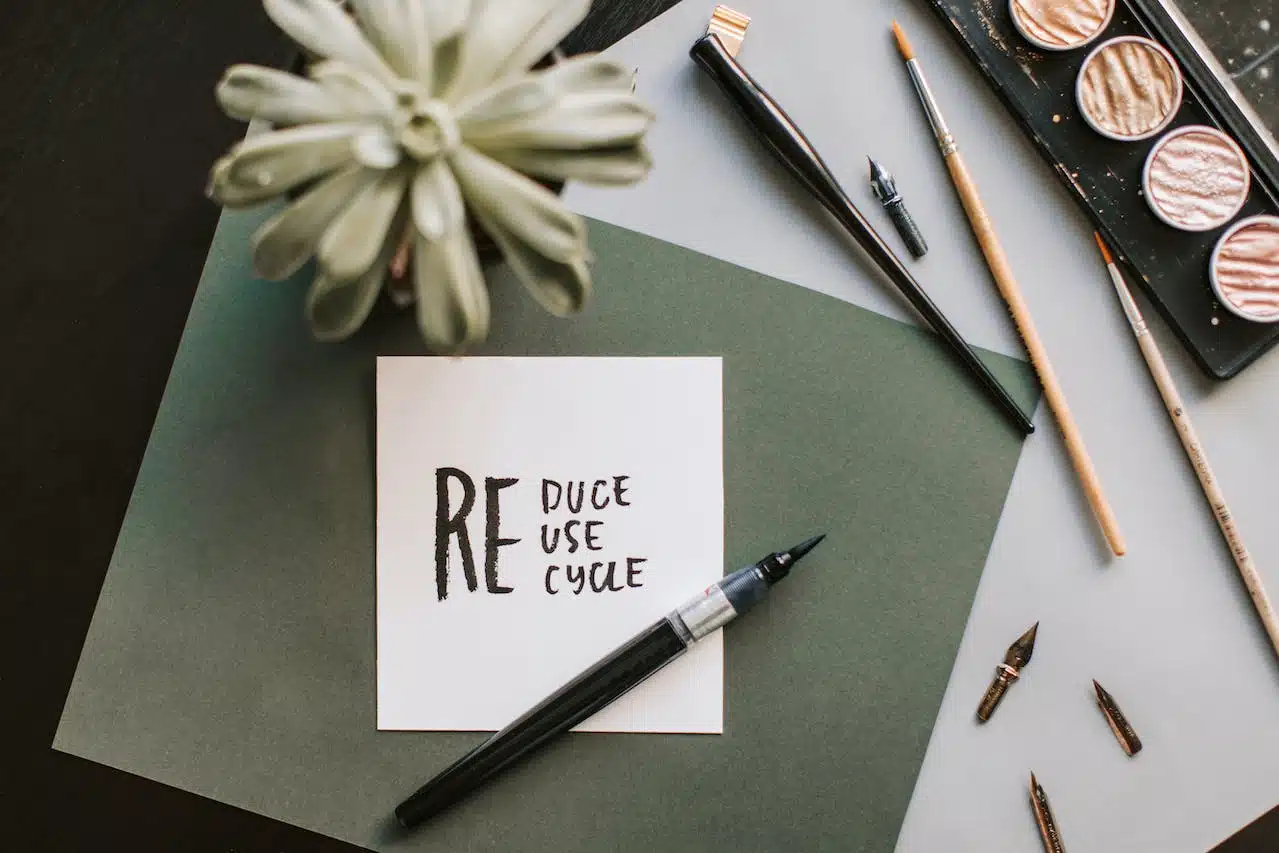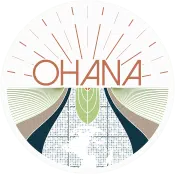
Overcoming Barriers to Create a Secondary Raw Materials Market
In March 2020, the European Commission adopted a new Circular Economy Action Plan (CEAP) that aims to make goods sold on the EU market clean, circular, and sustainable. As part of the new European Green Deal, the CEAP is key to achieving the EU’s ambitious environmental goals, which include carbon neutrality by 2050.
Sustainable waste management is a major pillar of realising a circular economy. In its essence this means both designing out and minimising waste in product production in the first place, but also by converting waste into new secondary materials that can be reused into new products.
Across the EU, industry and companies are innovating to recycle waste into new materials – but they face several challenges.
In this article, we’ll break down the main challenges one by one, and consider the EU’s vision to overcome these obstacles and incentivise companies to increasingly use recycled materials.
As a public affairs consultancy, we help companies to communicate with policymakers to bring about the policy changes that will allow them to better integrate circular design thinking and use recycled content into their processes.
An essential part of companies’ sustainability strategies could be based on integrating circular thinking into company processes. By understanding the policy barriers that exist today preventing an effective EU secondary raw materials market, companies can understand how to influence EU policy that will make a circular economy more effective.
Want someone with deep experience and EU connections to improve your sustainability strategy and connect you with policymakers? Get in touch!
What are the environmental benefits offered by using secondary raw materials?
The EU has already had legislation in place regulating waste management and waste shipment for a long time, but these were developed to fit a linear economy. To better support the development of a circular economy, a series of regulatory frameworks and revisions will bring about big changes in how waste is handled. The EU is currently revising its Waste Shipments regulation to ensure waste is treated properly and doesn’t harm people or the environment, and to guard against European companies exporting their waste problems to landfills in third countries. The Circular Economy Action Plan and the upcoming Sustainable Product Initiative will stipulate that companies will need to reduce the waste created throughout the product life cycle, and design durable, repairable products that will stay in circulation longer.
But a circular economy goes beyond minimizing the amount of waste produced. EU companies will need to use waste as a resource, transforming end-of-life products into new raw material for production.
Increased use of secondary raw materials solves several problems at once.
- The first problem it tackles is the issue of resource depletion: with current rates of consumption, there simply won’t be enough resources and minerals left to sustain production. Re-using waste materials in production makes industry more sustainable and less reliant on limited resources.
- The second problem it tackles is that of excess waste: currently, companies’ and individuals’ consumption patterns produce enormous mountains of waste products that cannot be recycled and end up in landfill.
- The third problem it tackles is the issue of carbon emissions: by overall using fewer resources and re-using resources, a large chunk of CO2 emissions will be cut from companies’ carbon footprint.
In essence, we produce too much waste and lack new natural resources – so using waste as a resource is a win-win solution.
What are the main barriers preventing an effective secondary raw materials market?
Companies trying to convert waste into secondary raw materials currently face several challenges, namely:
- Recycled materials are currently expensive.
- Right now, many products are not designed with high-quality waste recycling at end of life in mind.
- Current waste recycling technologies are not yet scalable.
- Current regulatory frameworks don’t incentivize the use of recycled materials.
We’ll look at each of these challenges and consider the possible solutions.
1. Recycled materials have a higher price point
Right now, it’s cheaper for companies to buy virgin raw materials than to reuse waste materials. Research and development to design new recycling systems is costly and requires upfront investment. Additionally, since these technologies are relatively new, they’re not yet producing economies of scale that could reduce costs.
The EU is seeking to address these challenges with incentives that may include lowering VAT rates on the recycling and repair of goods. They are also investing heavily in R&D to find – and scale – innovative technologies for the reuse and recycling of waste.
Major textiles companies as well as research innovation centres are participating in European Commission studies to assess the effectiveness of recycling technologies, and highlight the gaps in the current solutions and regulatory frameworks.
2. Products aren’t designed for circularity
As things stand, many companies don’t prioritise circularity in product design. This means at the end of their first life cycle, products are typically disposed of, rather than repaired, reused, or recycled into new materials. Inbuilt obsolescence is all common throughout the market.
Goods and production processes need to be designed with circularity in mind. To overcome these challenges, companies will need to devise products that are recyclable, have longevity, and are easily repaired or disassembled to be recycled into new materials.
The upcoming EU Sustainable Product Initiative will likely mandate just this kind of circular design for products. Initiatives like the use of product passports, which trace goods across the entire value chain, can help to promote better product quality at every stage of the value chain.
3. Difficulty scaling waste recycling innovations
We’re at a point where much of the technology for recycling waste products has been proven – but has not been scaled yet. Some innovations aren’t easily scalable, and some just have not been commercialized yet.
It’s crucial that the EU creates and incentivizes collection, sorting and recycling infrastructure for an effective secondary raw materials market, one that will allow technologies to scale up to increase efficiency and cost-effectiveness. It’s important that robust supply chains are put in place to increase efficiency and impact at every stage of the process.
4. Regulatory and policy obstacles
It’s crucial that policymakers push for policies that better incentivize a circular model. Right now, companies looking to recycle waste products come up against several regulatory roadblocks in how waste is classified and defined.
The EU roadmap for the Sustainable Textiles Strategy set out plans to develop better waste collection and sorting systems for the textile industry. But we still need clearer definitions of waste criteria, and a framework that recognizes when waste is seen as a secondary raw material, reclassifying end-of-life products as a valuable resource.
Companies play a major role in overcoming the barriers towards a secondary raw materials challenges
As a key part of sustainability strategies, companies should implement circular business models and design their products for reuse and recycling. They should aim to minimize waste production and find ways to use their high-quality waste materials as secondary resources.
But in order to do that, they need strong policy support that enables companies to do so.
By engaging with decision makers in the EU Commission, Council, and EU Parliament alike, companies can make the EU aware of the gaps preventing an effective secondary raw materials market, and influence the policies needed to improve it.
Want someone with deep sustainability experience and EU connections to help you get your voice heard in Brussels? Get in touch!
Join our newsletter to keep up to date with the latest sustainability news coming out of the EU.
Overcoming Barriers to Create a Secondary Raw Materials Market
In March 2020, the European Commission adopted a new Circular Economy Action Plan (CEAP) that aims to make goods sold on the EU market clean, circular, and sustainable. As part of the new European Green Deal, the CEAP is key to achieving the EU’s ambitious environmental goals, which include carbon neutrality by 2050.
Sustainable waste management is a major pillar of realising a circular economy. In its essence this means both designing out and minimising waste in product production in the first place, but also by converting waste into new secondary materials that can be reused into new products.
Across the EU, industry and companies are innovating to recycle waste into new materials – but they face several challenges.
In this article, we’ll break down the main challenges one by one, and consider the EU’s vision to overcome these obstacles and incentivise companies to increasingly use recycled materials.
As a public affairs consultancy, we help companies to communicate with policymakers to bring about the policy changes that will allow them to better integrate circular design thinking and use recycled content into their processes.
An essential part of companies’ sustainability strategies could be based on integrating circular thinking into company processes. By understanding the policy barriers that exist today preventing an effective EU secondary raw materials market, companies can understand how to influence EU policy that will make a circular economy more effective.
Want someone with deep experience and EU connections to improve your sustainability strategy and connect you with policymakers? Get in touch!
What are the environmental benefits offered by using secondary raw materials?
The EU has already had legislation in place regulating waste management and waste shipment for a long time, but these were developed to fit a linear economy. To better support the development of a circular economy, a series of regulatory frameworks and revisions will bring about big changes in how waste is handled. The EU is currently revising its Waste Shipments regulation to ensure waste is treated properly and doesn’t harm people or the environment, and to guard against European companies exporting their waste problems to landfills in third countries. The Circular Economy Action Plan and the upcoming Sustainable Product Initiative will stipulate that companies will need to reduce the waste created throughout the product life cycle, and design durable, repairable products that will stay in circulation longer.
But a circular economy goes beyond minimizing the amount of waste produced. EU companies will need to use waste as a resource, transforming end-of-life products into new raw material for production.
Increased use of secondary raw materials solves several problems at once.
- The first problem it tackles is the issue of resource depletion: with current rates of consumption, there simply won’t be enough resources and minerals left to sustain production. Re-using waste materials in production makes industry more sustainable and less reliant on limited resources.
- The second problem it tackles is that of excess waste: currently, companies’ and individuals’ consumption patterns produce enormous mountains of waste products that cannot be recycled and end up in landfill.
- The third problem it tackles is the issue of carbon emissions: by overall using fewer resources and re-using resources, a large chunk of CO2 emissions will be cut from companies’ carbon footprint.
In essence, we produce too much waste and lack new natural resources – so using waste as a resource is a win-win solution.
What are the main barriers preventing an effective secondary raw materials market?
Companies trying to convert waste into secondary raw materials currently face several challenges, namely:
- Recycled materials are currently expensive.
- Right now, many products are not designed with high-quality waste recycling at end of life in mind.
- Current waste recycling technologies are not yet scalable.
- Current regulatory frameworks don’t incentivize the use of recycled materials.
We’ll look at each of these challenges and consider the possible solutions.
1. Recycled materials have a higher price point
Right now, it’s cheaper for companies to buy virgin raw materials than to reuse waste materials. Research and development to design new recycling systems is costly and requires upfront investment. Additionally, since these technologies are relatively new, they’re not yet producing economies of scale that could reduce costs.
The EU is seeking to address these challenges with incentives that may include lowering VAT rates on the recycling and repair of goods. They are also investing heavily in R&D to find – and scale – innovative technologies for the reuse and recycling of waste.
Major textiles companies as well as research innovation centres are participating in European Commission studies to assess the effectiveness of recycling technologies, and highlight the gaps in the current solutions and regulatory frameworks.
2. Products aren’t designed for circularity
As things stand, many companies don’t prioritise circularity in product design. This means at the end of their first life cycle, products are typically disposed of, rather than repaired, reused, or recycled into new materials. Inbuilt obsolescence is all common throughout the market.
Goods and production processes need to be designed with circularity in mind. To overcome these challenges, companies will need to devise products that are recyclable, have longevity, and are easily repaired or disassembled to be recycled into new materials.
The upcoming EU Sustainable Product Initiative will likely mandate just this kind of circular design for products. Initiatives like the use of product passports, which trace goods across the entire value chain, can help to promote better product quality at every stage of the value chain.
3. Difficulty scaling waste recycling innovations
We’re at a point where much of the technology for recycling waste products has been proven – but has not been scaled yet. Some innovations aren’t easily scalable, and some just have not been commercialized yet.
It’s crucial that the EU creates and incentivizes collection, sorting and recycling infrastructure for an effective secondary raw materials market, one that will allow technologies to scale up to increase efficiency and cost-effectiveness. It’s important that robust supply chains are put in place to increase efficiency and impact at every stage of the process.
4. Regulatory and policy obstacles
It’s crucial that policymakers push for policies that better incentivize a circular model. Right now, companies looking to recycle waste products come up against several regulatory roadblocks in how waste is classified and defined.
The EU roadmap for the Sustainable Textiles Strategy set out plans to develop better waste collection and sorting systems for the textile industry. But we still need clearer definitions of waste criteria, and a framework that recognizes when waste is seen as a secondary raw material, reclassifying end-of-life products as a valuable resource.
Companies play a major role in overcoming the barriers towards a secondary raw materials challenges
As a key part of sustainability strategies, companies should implement circular business models and design their products for reuse and recycling. They should aim to minimize waste production and find ways to use their high-quality waste materials as secondary resources.
But in order to do that, they need strong policy support that enables companies to do so.
By engaging with decision makers in the EU Commission, Council, and EU Parliament alike, companies can make the EU aware of the gaps preventing an effective secondary raw materials market, and influence the policies needed to improve it.
Want someone with deep sustainability experience and EU connections to help you get your voice heard in Brussels? Get in touch!
Join our newsletter to keep up to date with the latest sustainability news coming out of the EU.


